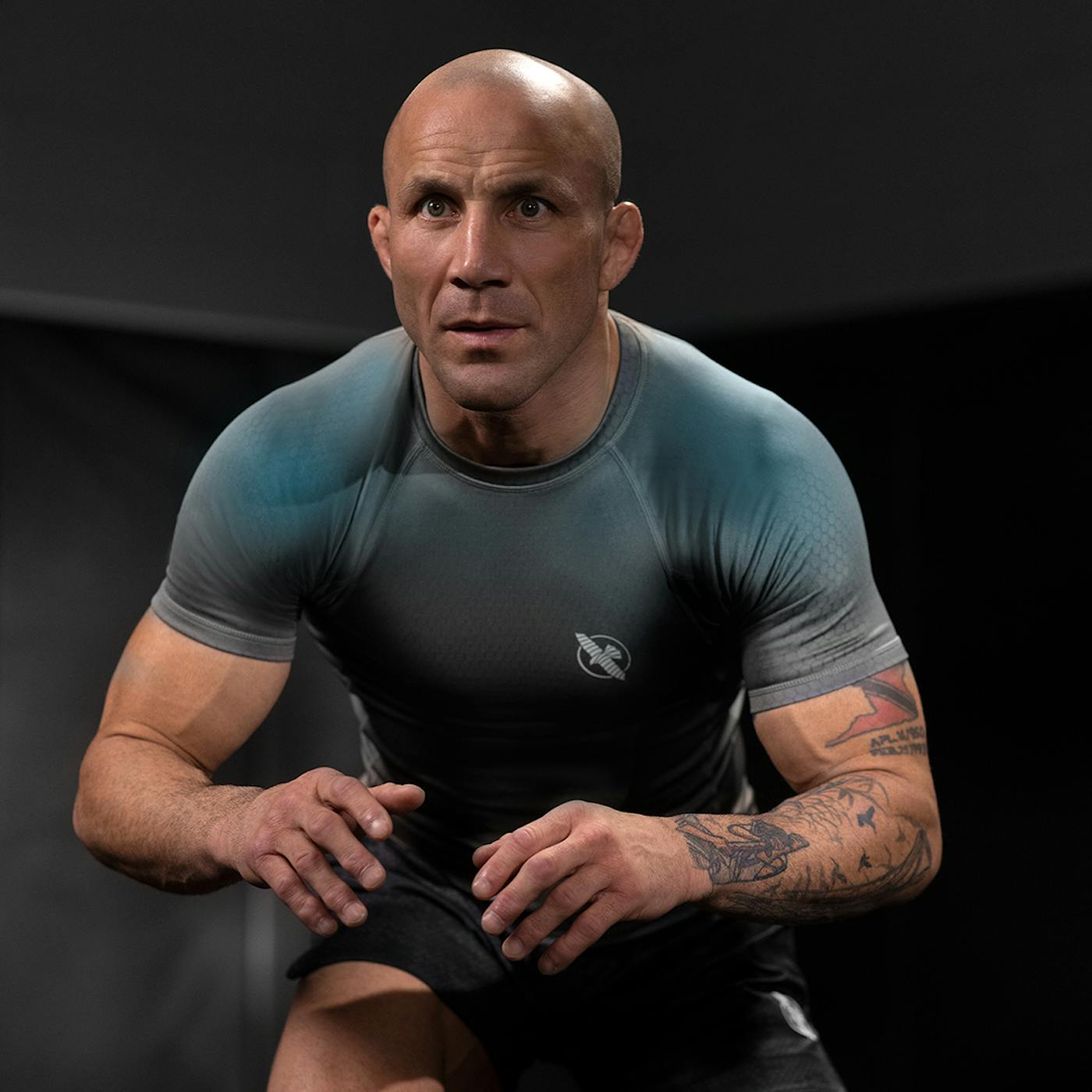The iconic gi is synonymous with jiu-jitsu training… but why wear a rash guard for BJJ?
A rash guard is an equally important part of training, but is often overlooked, especially by beginners.
Rash guards help you look the part, but they’re also essential to protect the skin, support mobility, and maintain hygiene on the mats.
The key is to find the right quality to hold up against intense grappling sessions and consistent groundwork.
Fortunately, Hayabusa has fighters covered with its superior engineering, focused on durability, compression, and comfort for serious grapplers.
Read on to learn more about BJJ rash guard benefits while training and what features to look for when choosing your optimal fit.
Why Wear a Rash Guard?
As the name suggests, a rash guard is fight apparel designed to prevent rashes, mat burn, and skin infections that are common in close-contact sports.
Rash guards originated with surfers as a way to provide a lightweight barrier for the skin to protect it from sunburns and rashes caused by friction with the surfboard.
They’re still used for body temperature control by providing a layer of warmth to insulate the body in ocean waters. Yet, over time, rash guards were adopted into martial arts for the same reasons: skin protection and temperature control.
For fight gear specifically, the extra element of comfort and mobility are taken into consideration. Jiu-jitsu rash guard materials and construction must be durable enough to withstand grappling while still giving the fighter ultimate mobility.

BJJ Rash Guard Benefits
While it may feel convenient to wear everyday gym clothes for jiu-jitsu training. Any loose-fitting apparel can be a dangerous distraction.
Therefore, the streamlined design of a rash guard is imperative to stay cool and comfortable while being able to move around the mats with ease.
Here’s a look at jiu-jitsu rash guard purposes, focusing primarily on safety and performance.
Hygiene and Skin Protection
Close-contact combat sports increase the chance of burns, rashes, and infections. To prevent this, rash guards add a barrier against bacteria and mat-borne infections, including ringworm and staph.
Additionally, quality rash guards are made with moisture-wicking materials to draw sweat away from the body and keep the body cooler and drier during intense training sessions.
This is essential to maintaining good hygiene when training and competing, as well as regulating body temperature.
Compression and Muscle Support
Form-fitting rash guard material also delivers compression benefits, such as healthy blood circulation, muscle recovery, and fatigue reduction, which helps to enhance performance throughout extended grappling sessions.
Mobility and Temperature Regulation
The material makes a difference in rash guards. Choosing quality will affect your safety and performance.
Look for ones with moisture-wicking technology to keep cool and breathable, lightweight material to maximize the range of motion.
Additionally, rash guards with reinforced stitching keep seams intact during quick, repetitive movements.
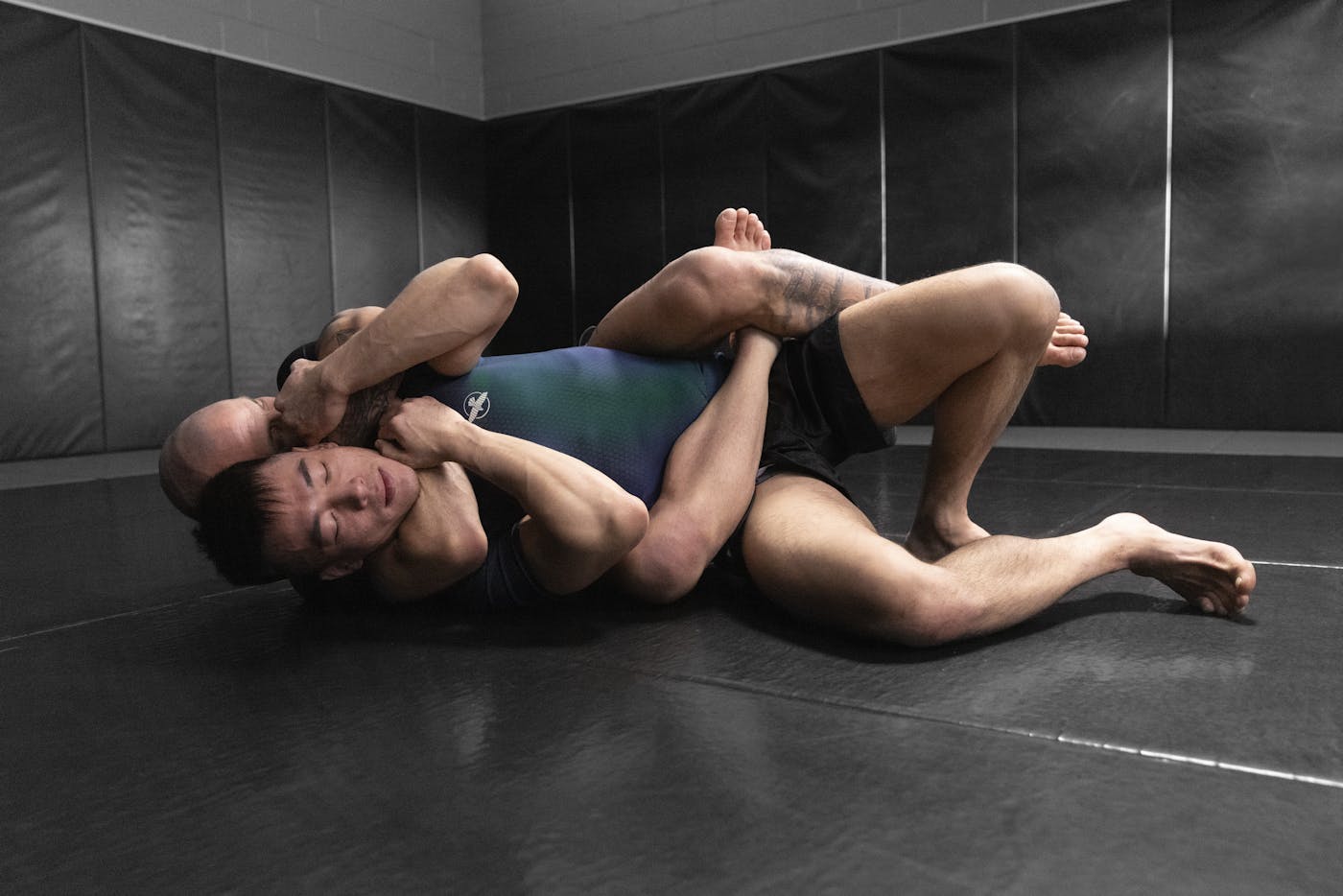
No-Gi Rash Guard vs. Gi Rash Guard
Though it’s likely you’re familiar with the gi uniform, which is a kimono jacket and pants set accompanied by a ranking belt, not all training or competition requires the full gi.
Instead, it may be appropriate to wear a no-gi rash guard. Take note of what’s required for your specific training gym and competitions.
For instance, IBJJF has requirements for no-gi competitions to promote fair grip play and prevent skin-on-skin friction for ranked fighters.
Many practitioners also choose to wear gi rash guards under their gis for extra sweat absorption and comfort.
Either way, Hayabusa crafts theirs for competition with availability in several IBJJF-approved ranked colors.
Choosing the Right Rash Guard for Your Training
Wearing a rash guard for jiu-jitsu training is mandatory in gyms and no-gi competitions to promote good hygiene and protect fighters.
Consider the fit, materials, and whether you prefer a short-sleeve or long-sleeve version when making your final choice.
Fit
Start your jiu-jitsu training strong by securing the perfect fit.
You want it to feel snug but not restrictive; lightweight but durable. Too loose or too tight can inhibit movements and negatively affect your performance.
Take chest and waist measurements to match with the appropriate size. For the chest, wrap the tape around the front beneath the armpits and in line with the nipples for an accurate measurement.
For the waist, keep the tape level all the way around, starting four fingers below your belly button. Keep in mind the natural waistline may not be the same size of the pants you wear for every day.
Materials
Review rash guard materials for quality. A polyester-spandex blend is preferable. It promotes durability and mobility.
Hayabusa rash guards are designed with multi-way stretch fabric that never restricts movement and feels smooth against the skin. It’s also breathable for comfort yet compressive enough to keep the muscles warm and ready to go.
Meanwhile, look for other special features, such as Hayabusa’s reinforced flatlock stitching to reduce irritation while remaining intact to withstand rigorous sessions on the mat.
How to Choose the Best BJJ Rash Guard
Short Sleeve vs. Long Sleeve
There are pros and cons for both short-sleeve and long-sleeve rash guards depending on the training scenario. Many practitioners like to have at least one of each.
Short sleeves keep the body cooler, which can be valuable when learning the fundamentals and working on technique.
Alternatively, long sleeves offer better mat protection when ground fighting and grappling. Determine what serves your training goals best, which may vary from day to day.
Hayabusa Men’s Apex Short Sleeve Rash Guard
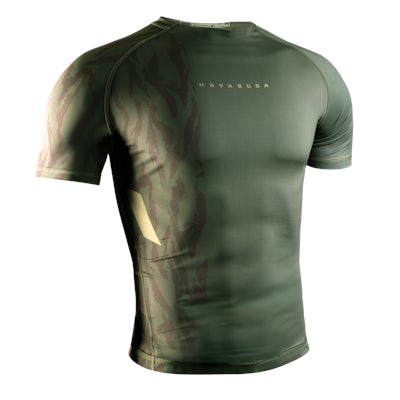
Hayabusa Men’s Core Long Sleeve Rash Guard
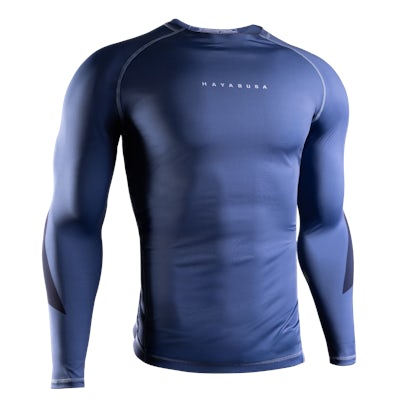
Hayabusa Men’s Core Short Sleeve Rash Guard
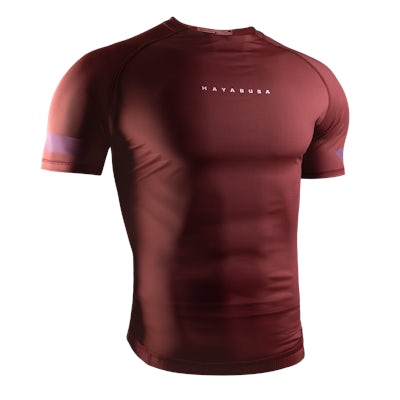
Hayabusa Women's Apex Long Sleeve Rash Guard

Hayabusa Rash Guards: Designed for Performance
With Hayabusa, every piece of fight gear is designed for maximum protection and optimal performance. The rash guards are no exception and are engineered for grappling with a durability that fighters can count on.
Whether you’re wearing a rash guard while jiu-jitsu training or conditioning at the gym, the resilient fabric and smooth, silky fit are the perfect combination to support any cardio activity.
The attention to detail is what makes the Hayabusa Rash Guard design stand out. Specific features include:
- Adaptive stretch fabric that moves with you to promote free-range mobility
- Lockdown loop on the hem to anchor your rash guard to your shorts for a secure and comfortable fit
- Frictionless comfort from a bonded seam neckline
- Sweat-wicking, quick-drying materials to conform to the skin and keep it cool
- Next-level design resilience thanks to high-tensile weave and reinforced flatlock stitching
Take advantage of this premium lineup of fight apparel to perform at your highest level, regardless of whether your needs include a no-gi rash guard or gi rash guard.
Fight with Confidence – Shop Hayabusa
A gi may eventually be part of your jiu-jitsu journey. However, wearing a rash guard is non-negotiable for hygiene and injury prevention.
Regardless of whether you prefer short-sleeve or long-sleeve, choose a quality design that’s been tested to maintain its integrity even during the most intense training sessions.
BJJ rash guard benefits including fit, materials, and compression all ultimately factor into your protection and performance.
Why settle for anything less than the best? Explore Hayabusa’s Rash Guards Collection to train with gear designed for world-class grapplers.


